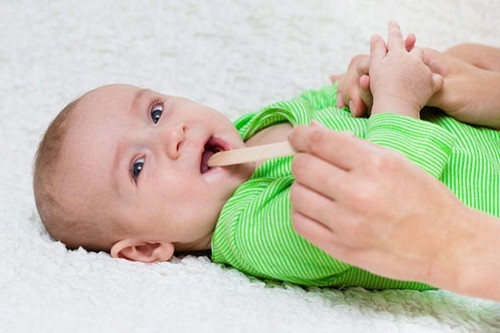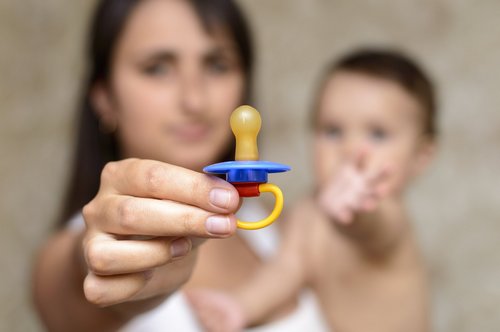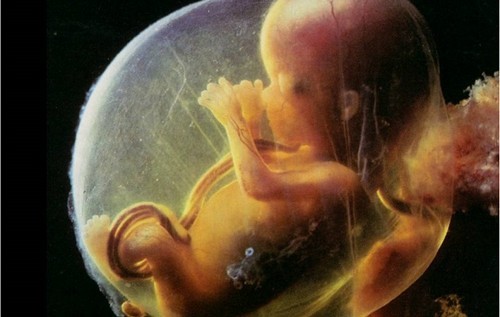The baby already holds his head relatively well, and while lying on his tummy, rests on his forearms. Radiantly smiles at adults, turns his head to the sound, trying to find its source with his eyes.
In the development of speech, the pre-verbal period or the period of “walks” begins, when the baby begins to make sounds “agu”, “abu” or “wa”.
For the first month of life, the body of the newborn is fully adapted to extra-urobial life. He already reacts to sounds, distinguishes intonation of a voice, turns a head and with might and main pulls his legs and handles.
The second month of life of the newborn is characterized by even greater development. Literally in a month, his daily regimen is completely changing. He becomes even more active and more receptive to the world around him, his interest in everything new is growing several times.
Baby physiology
The physiological development of a newborn at 2 months has its own characteristics:
- the digestive system is already practically adjusted, due to which the child is less likely to be bothered by colic, bloating and abdominal cramps;
- the immune system rises – the baby’s body, faced with “unfamiliar” infections, begins to actively produce specific antibodies;
- the central nervous system is not fully developed, therefore, at this age, babies are prone to generalization of painful processes that can occur with seizures, meningoencephalitis or meningitis;
- body temperature exceeds the temperature of an adult by 0.3 – 0.4 C;
- decreased tonus of the hands;
- eye coordination is formed – now the baby not only hears the sound, but also focuses his vision on the subject that makes it.
Also, coordination of the work of hands and vision is formed – when a child sees an object, he not only looks at it, but also pulls his hands to it. He begins to follow bright moving objects. If, during feeding, he is shown a bright toy, he will turn his attention to it and stop sucking.
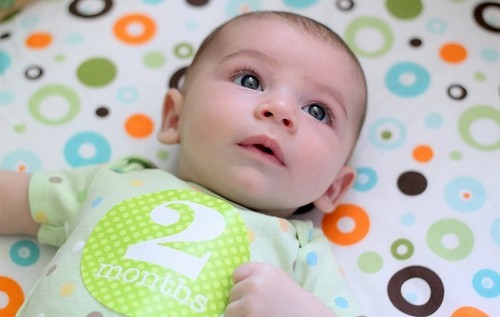
A newborn at 2 months already begins to raise his head, if it is placed on the tummy, and the chest, resting on the handles. So his muscles are strengthened. By this time, the crawl reflex disappears, the handles are free to move. But the legs are still compressed and bent at the knees (increased tone), this indicates the presence of a Kernig symptom (the inability to extend the joints of the lower extremities while they are bent in the hip).
During this period, the baby also actively begins to gain all. In the second month of life, he increases in weight of 600 – 800 g, and growth increases by 2 – 3 cm.
As for the stool, in children who are breast-fed, it occurs about 2 to 3 times a day, and those who are breastfed – 1 to 2 times. Sometimes there are cases that the intestines of newborns in hepatitis B do not empty for more than a day. This phenomenon is considered normal if the baby is not bothered by abdominal pain, and is determined by the fact that mother’s milk is well absorbed in the baby’s body.
Psychology of a 2 month old baby
The psychological development of a 2 month old baby is also reaching a new level. He already recognizes voices and recognizes mom and dad in appearance, becomes more cheerful and is already trying to take part in a conversation with adults – he smiles at them in return and tries to make sounds. His crying takes on a particular emotional nature, which allows parents to determine what worries the child – he is hungry or somewhat frightened.
The main indicators of normal psychological development are :
- the ability to hold the head lying on the stomach and focus it at the top point for several minutes;
- the ability to rest against the legs, while holding it under the armpits;
- reacts when they talk to him – smiles, snorts, jerks with legs and arms, makes various sounds;
- close examination of hanging toys;
- focusing on moving bright subjects.
At this age, a newborn baby begins to respond to weather changes, geomagnetic and astronomical phenomena, which is characterized by continuous crying, restless or prolonged sleep, lethargy or excessive activity.
Sight and hearing
The baby at 2 months already clearly hears voices and distinguishes colors. With a loud sound, the baby shudders and blinks, and when he heard someone’s voice or a sharp sound, he concentrates and tries to find the source of the sound with his eyes.
Also at this age, children already begin to distinguish colors and focus their vision on bright objects. They begin to recognize the facial features of the people who most often surround him. When talking with them begins to smile and babble.
It is very important to protect the child at this age from loud and annoying sounds. Since it is during this period that the formation of the central nervous system occurs, and loud sounds are an irritant for her, which may affect the further psychological development of the baby.
Skills and abilities
A newborn baby at 2 months old already holds the head and rotates it in different directions, examining its surroundings.
Lying on his back, begins to lift the upper body, making movements similar to physical exercises on the press. If the child is offered fingers as an emphasis, then he will begin to lift himself, as if he wants to sit down, and some children do it. However, you should not overdo it with such “exercises”, as this can affect the development of the hip joints. In general, doctors do not recommend planting children under 4 to 5 months.
The baby has a great desire to stand, which he tries to do when he is held under the armpits. He begins to unbend legs and rest against them. This is a natural phenomenon that can reduce the tone of the legs.
The child begins to play with toys, twisting and looking at them in his hands. For the development of motor skills, he can be given not only voluminous objects of large sizes, but also small figures that have different shapes and textures.
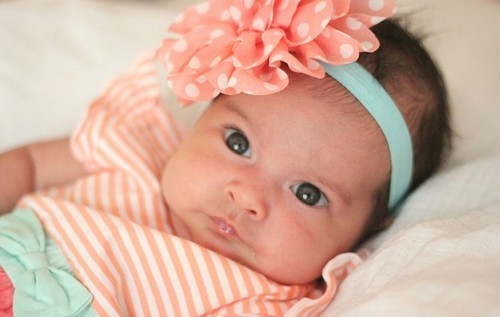
Sleep
At this age, a baby’s sleep takes less time than in the first month of his life. Daytime sleep is decreasing in duration, now the baby sleeps twice for several hours, and several times for several minutes (from 5 to 20). But the time of night sleep increases to 12 hours, of course, that the baby wakes up several times to refresh, but then easily falls asleep, and most often this occurs during feeding.
Already at this age, children manifest themselves as “larks” or “owls”. Larks fall asleep at about 8 p.m. and wake up at about 6 a.m. – 7:00 a.m., and owls fall asleep at about 11 p.m. – 1:00 a.m. and wake up at about 10 a.m. – 12:00 p.m.
Food
At this age, the baby is fed exclusively with breast milk or infant formula. The child has become more active, which means that the waste of energy takes place more. To replenish the balance, he needs the use of food in large volumes. So, for example, if in the first month of life, the baby sucked milk from only one breast and it was more than enough for him, then in two months the baby can suck milk from two breasts and this is normal for him.
Breastfeeding can occur at any time for each requirement of the child (at least every half hour), which cannot be said about feeding the baby with milk mixtures. Children who are breast-fed have frequent problems with bowel movements. As a rule, such babies are very often worried about bloating and clicks in the abdomen. Therefore, feeding with milk mixtures should occur strictly according to the schedule, that is, every 3 to 3.5 hours. Since the need for food in the baby has increased, it is necessary to increase the amount of the diluted mixture.
Motor development
At 2 months the baby can:
- hold the head;
- raise the upper body of the body;
- “Stand” on legs;
- hold and play rattles.
The kid begins to actively develop, but you should be extremely careful when playing and holding the child in his arms. Its bones and cartilage are not yet fully strengthened, and any careless movement can lead to a fracture or dislocation.
Games
The kid has already become active, and the time has come for developing games and activities. At 2 months, the child is interested in observing various moving objects, studying the faces of loved ones and the situation in the room. The following activities can be used as educational games:
- You can hang bright toys over the crib, it will be good if they make various sounds. At their sight, the baby will have a desire to reach out to them and try them “to taste”. Therefore, if the toys are close to the baby, it is best to use plastic products that are easy to wash. Soft toys, although safer, but they accumulate a lot of dust and various microorganisms that can cause infectious diseases or inflammatory processes in the baby’s body;
- You can take the bell, tie it to a string and hang it at a small distance from the baby’s eyes (about 20 – 30 cm, the close proximity of objects can cause strabismus). Hide the bell in your palm and drive it in different directions. The kid will first respond to the sound, and look for its source. Then open your palm and show the item to the baby, without ceasing to drive them. The child will focus on the bell and will try to reach it.
- The baby’s sense of rhythm can be developed by reading books or singing songs. When the child begins to make sounds, repeat them so that he hears them.
- To help the baby begin to associate your words with objects, take the child in his arms and walk around the room with him, showing various objects and necessarily saying what it is.
And remember that a child is a personality that is formed thanks to your upbringing. Sing songs and tell him stories only those that evoke positive emotions. He simply needs your constant presence; he cannot yet separate his life from yours, since most recently you were one with him. Do not be afraid to spoil your child, because your love and care given to the child now will definitely come back to you from him in the future!

